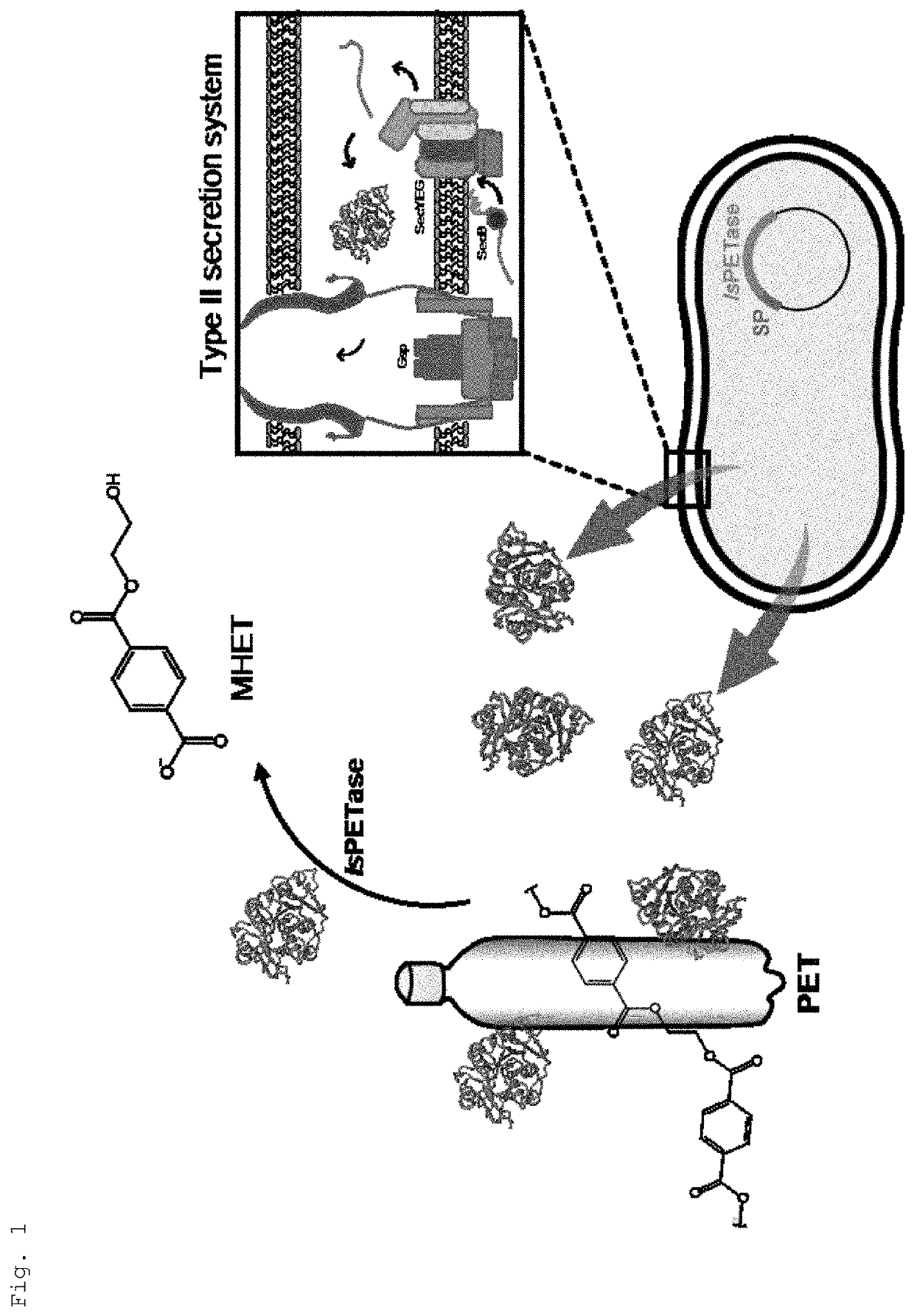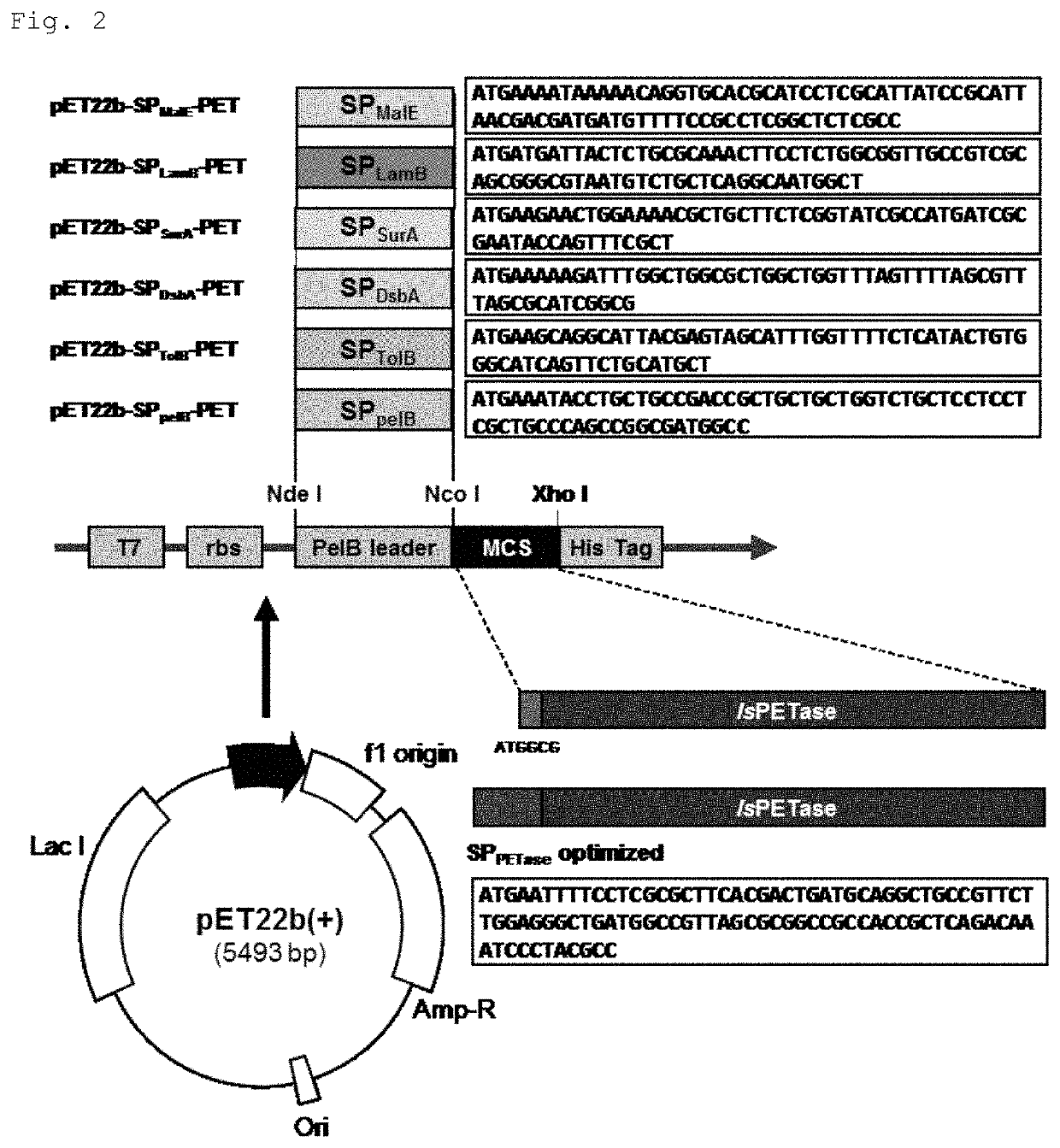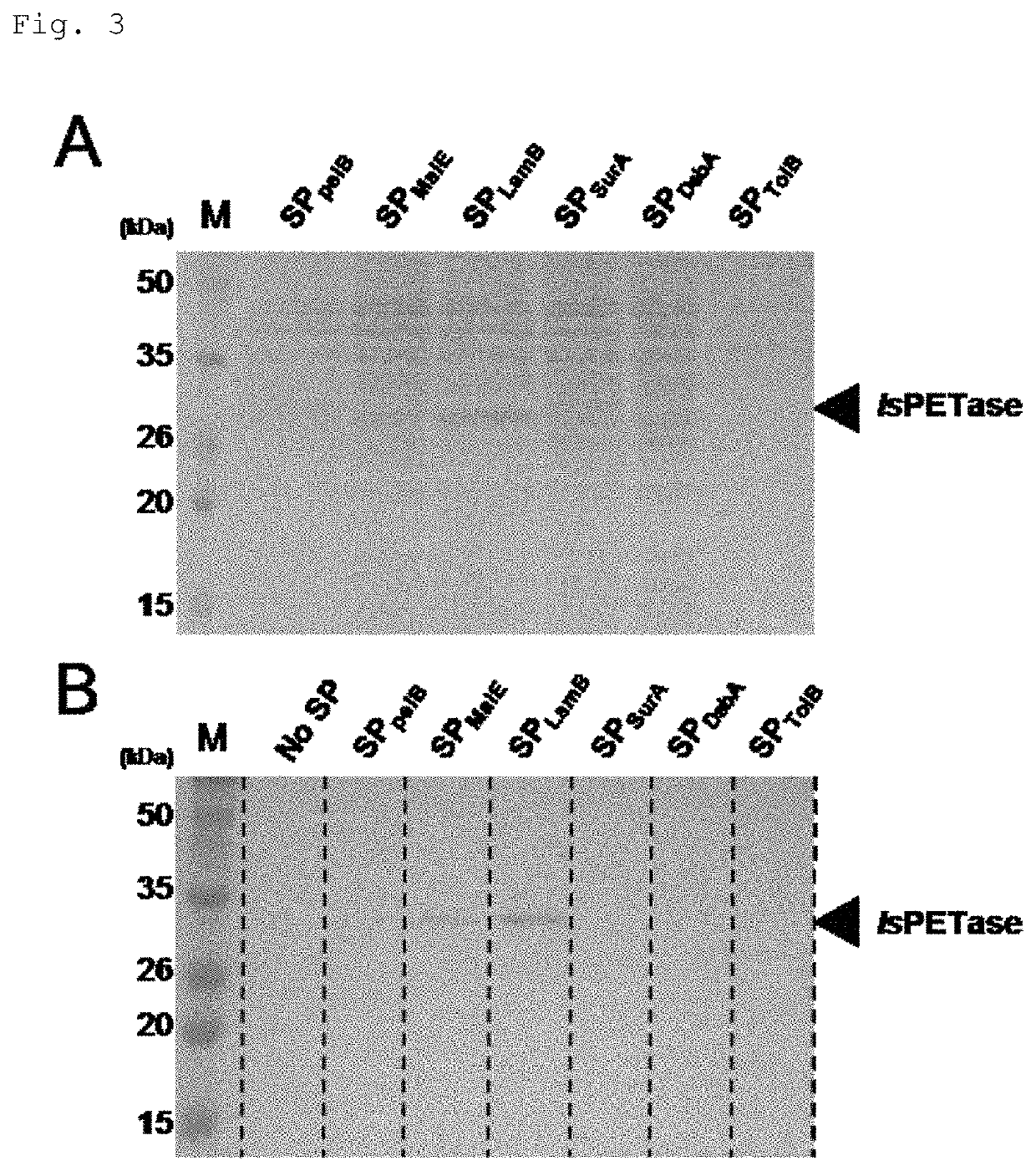Recombinant PETase producing strain, recombinant MHETase producing strain, and composition for degrading PET containing the same
a technology of recombinant petase and mhetase, which is applied in the field of recombinant petase and recombinant mhetase expression vectors, can solve the problems of serious recombinant expression system, low stability, dissolution, etc., and achieve the effect of improving the degrading ability of pet and high yield
- Summary
- Abstract
- Description
- Claims
- Application Information
AI Technical Summary
Benefits of technology
Problems solved by technology
Method used
Image
Examples
Embodiment Construction
[0045]Hereinafter, the present invention will be described in more detail with reference to the accompanying drawings. However, these descriptions are presented by way of example only to assist in understanding the present invention. The scope of the present invention is not limited to these exemplary descriptions.
Experimental Example 1. Preparation of Recombinant IsPETase Expression Vector
[0046]As shown in FIG. 1, an expression vector containing a polynucleotide encoding IsPETase and a signal peptide was prepared.
[0047]First, five types of Sec-dependent signal peptides expressed in E. coli (maltose / maltodextrin binding periplasmic protein; SPMalE 1 maltoporin; SPLamB, periplasmic molecular chaperone SurA; SPSurA, thiol:disulfide interchange protein DsbA; SPDsbA, and Tol-Pal system protein TolB; SPTolB) were used to prepare the expression vector. As shown in FIG. 2, pET22b (+) vector (Novagen / Merck) without a leader sequence was used as the expression vector. Codon optimized oligonu...
PUM
| Property | Measurement | Unit |
|---|---|---|
| temperature | aaaaa | aaaaa |
| temperature | aaaaa | aaaaa |
| pH | aaaaa | aaaaa |
Abstract
Description
Claims
Application Information
 Login to View More
Login to View More - R&D
- Intellectual Property
- Life Sciences
- Materials
- Tech Scout
- Unparalleled Data Quality
- Higher Quality Content
- 60% Fewer Hallucinations
Browse by: Latest US Patents, China's latest patents, Technical Efficacy Thesaurus, Application Domain, Technology Topic, Popular Technical Reports.
© 2025 PatSnap. All rights reserved.Legal|Privacy policy|Modern Slavery Act Transparency Statement|Sitemap|About US| Contact US: help@patsnap.com



